What Types of Foods and Accomodation are Available During the 14-Day Everest Base Camp Trek?
Accommodation is in teahouses (simple but comfortable mountain lodges) when trekking, and a Standard hotel in Kathmandu. The hotel is comfortable with private, twin-share facilities. Tea-houses are generally simple, and are run by individual families. The most common ‘best memory’ of a trip to Nepal is the warmth and hospitality of the local people and the evenings spent in the teahouses along the route.
The tea houses vary, but please be prepared for rustic conditions, especially if you are only used to nice hotels! Being out of your comfort zone adds to the challenge and makes your achievement all the sweeter.
We will provide only breakfast while you are in Kathmandu and three-course meals while you are on trek. This means you will be taking breakfast and dinner at Tea-house you stay and lunch in the mid of your trekking. Since the Everest region is geographically a remote place, you will be provided only selected but hygienic and organic local foods such as Nepali dal bhat, Tibetan soup, and bread, porridge etc.
Do I Get Information About the Trek Before Starting?
Absolutely. Amazing Nepal Trek provides a comprehensive pre-trek orientation to ensure you're fully prepared for your Everest Base Camp adventure:
Pre-Trek Briefing Session:
- Upon arrival in Kathmandu, you'll attend a detailed briefing session with our representative
- The session covers the complete day-by-day itinerary with elevation profiles
- Our Trek expert will explain acclimatization strategies specific to the Everest region
- Safety protocols and emergency procedures will be thoroughly reviewed
- You'll receive practical advice on managing the altitude and pace
- The briefing includes recommendations for equipment usage and adjustments
- Personal introduction to your government-licensed trekking guide
- Opportunity to discuss any personal concerns or special requirements
- Exchange of contact information and communication protocols
- Discussion of your trekking goals and expectations
- Establishment of guide-trekker communication systems during the trek
This comprehensive pre-trek preparation is designed to maximize your safety, comfort, and enjoyment throughout your Everest Base Camp journey. Amazing Nepal Trek considers this orientation an essential component of our professional service, ensuring you begin your adventure with confidence and peace of mind.
What Kind of Trekking Staff Will Support My 14 days Everest Base Camp Trek?
Amazing Nepal Trek provides professional staffing to ensure your safety and comfort throughout your journey:
Guide Services:
- Government-registered, well-trained English-speaking guide
- Expert knowledge in responsible and eco-friendly tourism practices
- Comprehensive understanding of the Everest region's terrain, culture, and safety protocols
- Professional training in first aid and high-altitude emergency response
Assistant Guide Support for Big Group:
- Dedicated assistant guide available to provide additional support for Groups
- Ready to assist with any situation that may arise during the trek
- Ensures personalized attention even in larger groups
- Helps maintain optimal pacing for different trekking abilities within the group
Porter Services:
- One porter provided for every two trekkers
- Each porter carries a maximum of 25kg (12.5kg per trekker)
- Properly equipped with appropriate gear for mountain conditions
Guide Insurance:
All Amazing Nepal Trek Guides are fully insured as Part of our commitment to ethical employment practices in the trekking industry. Ensures staff can focus entirely on providing excellent service to our clients
Our professional trekking team is selected for their experience, knowledge, and dedication to creating a safe and memorable Everest Base Camp adventure.
What Is the Group Size for the 14-Day Everest Base Camp Trek?
Amazing Nepal Trek operates 14-Day Everest Base Camp treks with flexible group sizes ranging from two to ten participants. This optimal size range ensures personalized attention from our guides while maintaining a social trekking experience. For solo travelers, we offer customized arrangements—simply contact us to discuss solo trekking options and we'll create a plan that meets your needs and preferences.
For larger groups exceeding ten people, Amazing Nepal Trek provides special planning services. Please contact us well in advance so we can develop and improvise suitable itineraries that accommodate your larger group's dynamics. We'll adjust guide-to-trekker ratios, porter services, and logistics to ensure everyone in your group enjoys a safe and memorable Everest Base Camp experience regardless of group size.
Will I Receive Any Recognition After Completing the 14 Days EBC Trek?
Yes! After successfully completing your 14-Day Everest Base Camp Trek, Amazing Nepal Trek will present you with an official ANTE Adventure Certificate. This personalized certificate serves as a meaningful memento documenting your achievement of reaching Everest Base Camp at 5,364m (17,598ft). The certificate includes your name, trek dates, and maximum altitude reached, providing tangible recognition of your determination and accomplishment in conquering one of the world's most iconic trekking routes. Many trekkers proudly display this certificate at home or in their office as a reminder of their Himalayan adventure.
Is the Everest Base Camp Trek suitable for families and children?
Yes, the Everest Base Camp Trek is a family-friendly adventure and can be suitable for children with the right planning. Remarkably, a 4-year-old child successfully completed the trek with Amazing Nepal Trek on January 1, 2024, demonstrating that even young trekkers can reach base camp with proper support, pacing, and acclimatization. Kids often adapt well when the trek is made fun, engaging, and tailored to their needs.
While the standard 16-day itinerary might be too demanding for young children, it can be customized with shorter walking days, more rest stops, and extra acclimatization time to ensure safety and comfort. Trekking with kids requires patience and flexibility, but with experienced guides and the right gear, it can be a rewarding experience for the whole family. Contact us for a customized family-friendly itinerary designed specifically for trekking with children.
Do I Need Travel Insurance for the 14-Day Everest Base Camp Trek?
Yes, comprehensive travel insurance is mandatory for your 14-Day Everest Base Camp Trek with Amazing Nepal Trek. Your insurance policy must specifically include:
- High-altitude trekking coverage (up to 5,545m/18,193ft)
- Emergency helicopter evacuation from remote areas
- Medical treatment in Nepal
- Trip cancellation and interruption protection
- Coverage for loss of personal belongings
Standard travel insurance policies often exclude high-altitude activities, so verify that your policy explicitly covers trekking to Everest Base Camp. We recommend insurance with at least $100,000 in emergency evacuation coverage and $50,000 in medical coverage. Keep your insurance documentation with you throughout the journey and share the details with your guide during the pre-trek briefing in Kathmandu.
What Can We Expect on the 14-Day Everest Base Camp Trek Package?
The Amazing Nepal Trek 14-Day Everest Base Camp Trek package provides a complete Himalayan adventure experience including:
- Airport pickups and drop-offs in Kathmandu
- Two nights' accommodation in Kathmandu (3-star hotel with breakfast)
- Domestic flights between Kathmandu and Lukla (both ways)
- TIMS Card and Sagarmatha National Park entry fees
- Teahouse accommodations during the entire trek
- Three meals daily during the trek (breakfast, lunch, and dinner)
- English-speaking government-licensed trekking guide
- Porters (1 porter for 2 trekkers) to carry main luggage (up to 25kg)
- Staff insurance, salary, equipment, food, and accommodation
- Welcome and farewell dinners in Kathmandu
- All government and local taxes
Following a carefully designed itinerary, you'll gradually ascend through picturesque Sherpa villages, ancient monasteries, and stunning mountain landscapes. You'll witness breathtaking views of Mt. Everest (8,848m), Lhotse (8,516m), Nuptse, Ama Dablam, Thamserku, and many other majestic peaks. Cultural highlights include visits to Namche Bazaar, the Tengboche Monastery, and authentic interactions with local Sherpa communities.
Are You Suitable for the 14-Day Everest Base Camp Trek?
The Amazing Nepal Trek 14-Day Everest Base Camp Trek is designed for trekkers with:
- Moderate to good physical fitness who can walk 5-7 hours daily on consecutive days
- Previous hiking experience, preferably in mountainous terrain
- The ability to handle varying trail conditions including steep ascents and descents
- Mental preparedness for basic teahouse accommodations and changing weather conditions
- No severe medical conditions that could be exacerbated by high altitude (5,545m)
While prior high-altitude experience is beneficial, it's not mandatory. The itinerary includes strategic acclimatization days in Namche Bazaar and Dingboche to help your body adjust to the altitude gradually. If you can maintain a steady walking pace for several hours and have experience hiking with a day pack, you should be able to complete this trek successfully.
Age isn't the primary factor—Amazing Nepal Trek has guided trekkers from 12 to 70+ years old to Everest Base Camp. However, anyone under 18 must be accompanied by a responsible adult, and those over 65 should provide a medical clearance certificate. If you have concerns about your suitability, consult your physician before booking.
How to Get Prepared for the 14-Day Everest Base Camp Trek?
Physical Preparation:
- Begin a dedicated fitness program 2-3 months before your trek
- Focus on cardio exercises (hiking, walking, swimming, cycling) to build endurance
- Include strength training for legs, core, and back muscles
- Practice hiking with your daypack on varied terrain
- Gradually increase workout durations to 4-5 hours once weekly
- Break in your hiking boots thoroughly before the trek
Altitude Preparation:
Gear Preparation:
- Acquire all necessary gear well in advance (see our packing list)
- Layer your clothing according to Amazing Nepal Trek's recommendations
- Ensure your sleeping bag is rated for temperatures of at least -10°C (14°F)
- Break in your hiking boots by wearing them regularly before the trek
Administrative Preparation:
- Obtain a valid Nepal visa (available on arrival or from Nepalese embassies)
- Secure comprehensive travel insurance with high-altitude coverage
- Get recommended vaccinations for Nepal
- Make several photocopies of your passport and insurance documents
- Bring extra passport photos for permits
Amazing Nepal Trek provides a detailed pre-departure information package to all booked clients, which includes specific recommendations for your trek preparation.
Altitude Sickness and Remedies During 14 Days Everest Base Camp Trek
Understanding Altitude Sickness:
Altitude sickness or Acute Mountain Sickness (AMS) is a serious concern on the Everest Base Camp Trek, where elevations reach above 5,500m. Amazing Nepal Trek prioritizes your safety with a carefully planned acclimatization schedule, but awareness is crucial.
Common Symptoms:
- Persistent headache unrelieved by medication
- Dizziness and lightheadedness
- Nausea and vomiting
- Loss of appetite
- Fatigue and weakness
- Difficulty sleeping
- Shortness of breath even when resting
- Increased heart rate at rest
Prevention Strategies by Amazing Nepal Trek:
- Strategically planned acclimatization days in Namche Bazaar and Dingboche
- "Climb high, sleep low" approach during acclimatization days
- Properly paced daily walking schedule
- Regular hydration reminders from your guide (aim for 3-4 liters daily)
- Daily health checks including pulse oximeter readings
- Guidance on proper nutrition at altitude
Remedies and Treatment:
- Immediate notification to your guide about any symptoms
- Descend to lower altitude if symptoms persist (the most effective treatment)
- Rest days when needed (flexibility in the itinerary)
- Proper hydration and adequate calorie intake
- Painkillers for headaches (ibuprofen or acetaminophen)
Amazing Nepal Trek guides are trained to recognize early signs of altitude sickness and make appropriate decisions regarding your safety. In severe cases, they will arrange immediate descent and evacuation. Trust your guide's judgment—even if it means not reaching Everest Base Camp, your health and safety come first.
14 Days Everest Base Camp Trekking Distance and Elevation
Total Trekking Distance:
The Amazing Nepal Trek 14-Day Everest Base Camp itinerary covers approximately 130 kilometers (80 miles) of total trekking distance.
Key Elevation Points:
- Kathmandu: 1,400m (4,593ft)
- Lukla: 2,860m (9,383ft)
- Namche Bazaar: 3,440m (11,286ft)
- Tengboche: 3,860m (12,664ft)
- Dingboche: 4,410m (14,469ft)
- Lobuche: 4,910m (16,109ft)
- Gorak Shep: 5,164m (16,942ft)
- Everest Base Camp: 5,364m (17,598ft)
- Kala Patthar: 5,545m (18,192ft) - highest point of the trek
The typical walking time ranges from 5-7 hours per day, with some days being shorter to allow for proper acclimatization. Amazing Nepal Trek's itinerary is designed to balance steady progress with adequate rest and acclimatization, maximizing your chances of successfully and safely reaching Everest Base Camp.
14 Days Everest Base Camp Trek Booking Procedure
Step 1: Initial Inquiry
- Contact Amazing Nepal Trek via website, email, or phone
- Specify your preferred trek dates and group size
- Ask any preliminary questions about the trek
- Receive detailed information about the 14-Day Everest Base Camp Trek
Step 2: Booking Confirmation
- Complete the Amazing Nepal Trek booking form
- Pay the deposit (20% of total trek cost) to secure your reservation
- Receive booking confirmation and receipt
- Get pre-trip information package with preparation guidelines
Step 3: Final Preparations
- Purchase comprehensive travel insurance with high-altitude coverage
- Book international flights to Kathmandu
- Complete recommended medical check-ups
- Gather required trekking gear
Step 4: Arrival in Kathmandu
- Inform Amazing Nepal Trek of your arrival details
- Meet your representative at Tribhuvan International Airport
- Transfer to your hotel in Kathmandu
- Attend trek briefing with your guide
- Receive your duffel bag and check your equipment
Amazing Nepal Trek offers free date changes in case of flight cancellations due to weather, personal emergencies, or unexpected events. A detailed terms and conditions document will be provided during the booking process.
Can I Use Ordinary Drinking Water During This Trek, and What Are the Toilets and Shower Facilities?
Drinking Water:
Tap water or natural water sources in the Everest region are NOT safe to drink without treatment
Amazing Nepal Trek recommends these options for safe drinking water:
- Purchasing bottled mineral water (available throughout the trek but prices increase with altitude, from NPR 100 at lower elevations to NPR 400 at Gorak Shep)
- Using water purification tablets (provided by Amazing Nepal Trek)
- Using UV sterilizers like SteriPEN (effective but bring extra batteries)
- Requesting boiled water at teahouses (usually costs NPR 100-150 per liter)
- Tea, coffee, and hot beverages at teahouses are made with boiled water and safe to drink
- Aim to consume 3-4 liters of water daily to combat altitude sickness
Toilet Facilities:
- Kathmandu hotel: Western-style flush toilets with toilet paper
- Teahouses in lower regions (Lukla to Namche): Mix of Western and Asian-style toilets, generally with flush mechanisms
- Mid-elevation teahouses (Namche to Dingboche): Basic Western and squat toilets, some with flush systems
- Higher elevations (above Dingboche): Primarily basic squat toilets, often without flush mechanisms
- Toilet paper is rarely provided in teahouses and should be carried with you
- Hand sanitizer is essential as soap may not be available
Shower Facilities:
- Kathmandu hotel: Hot showers with good pressure
- Lower elevations (up to Namche): Hot showers available in most teahouses (NPR 300-500)
- Mid elevations (Tengboche to Dingboche): Limited hot shower availability, often gas-heated (NPR 500-700)
- Higher elevations (above Dingboche): Very limited or no hot shower facilities
- Most showers are in shared bathroom facilities
- "Bucket showers" (hot water in a bucket) may be the only option in some locations
- Many trekkers rely on wet wipes above Dingboche
Amazing Nepal Trek recommends bringing wet wipes, quick-dry towels, and biodegradable soap for personal hygiene. Maintaining lower expectations regarding facilities at higher elevations will help you better enjoy the overall experience. Your guide can advise on the best facilities available in each location.
Are Permit Fees Included in the Trek Price?
Yes, all required permit fees are fully included in your Amazing Nepal Trek package price for the 14-Day Everest Base Camp Trek. The Nepalese government and local authorities charge various fees for entry to World Heritage sites, Sagarmatha National Park, restricted areas, and climbing permits—all of which are mandatory for legally trekking in the Everest region. Our comprehensive pricing structure covers the Sagarmatha National Park entry fee (approximately NPR 3,000), TIMS (Trekkers' Information Management System) card, Khumbu Pasang Lhamu Rural Municipality fee, and any other official permits required for the standard Everest Base Camp route. You won't need to worry about carrying extra cash for unexpected official fees or permits during your trek.
What About Lukla Flight While Going on 14 Days EBC Trek?
Twin Otter and Dornier is the primary mode of transport to and from the airstrip at Lukla. This service is fairly dependable. Sometimes, flights (to and from Lukla) may be canceled due to mountain weather conditions or technical problems.During peak trekking months (March to May and Mid-September to November), flights to and from Lukla may operate from Ramechhap Airport (Manthali) instead of Kathmandu due to high traffic. Expect potential delays, strict baggage limits (10-15 kg), and weather-related cancellations. Plan extra travel time for the road journey to Ramechhap 135km (4-5 hours) and keep buffer days in your itinerary. Book your trek early to secure seats on morning flights, as weather often disrupts later schedules.
Alternatively, Amazing Nepal will charter a helicopter to ensure you are on schedule for your international flight. The helicopter can fly if the visibility is 1500m, while the twin otter can fly if the visibility is 5000m, as per Nepal’s Civil Aviation rules.
The cost of the helicopter is payable directly to our Kathmandu office in the event that this service is utilized. US cash, traveler’s cheques, or credit cards (Visa Cards, Master Cards only) are accepted. You will be given a receipt upon payment so that you may claim the amount from your travel insurance. The minimum cost will be US$500 and a maximum US$3500 depending on the number of group members.
It is recommended that you should arrive in Kathmandu a day earlier before you start your trek. When you arrive a day earlier, you will have time to rest as well as time to buy trekking equipment. Similarly, it is best to have some extra days after you have finished your trek because your flight to Kathmandu/Lukla might be canceled due to bad weather. So all together it is recommended to have a few extra days beside the trip schedule so that you don’t miss your International Flight.
Note: The above information might change due to unforeseen circumstances such as weather conditions, trail obstructions, or flight visibility issues. Our team at Amazing Nepal Trek & Expedition will make every effort to ensure your safety and comfort, offering suitable alternatives when necessary. We appreciate your understanding and flexibility as we adapt to mountain conditions while maintaining the quality of your experience. For the most current updates and adjustments during your trek, our experienced guides will provide real-time information and alternative arrangements as needed. Safety remains our top priority throughout your Himalayan adventure.
What is the electricity situation like on the Everest Base Camp Trek?
Electricity is available in most villages along the Everest Base Camp trek, but its reliability and cost vary with altitude. In lower regions such as Lukla, Phakding, and Namche Bazaar, electricity comes from local hydropower, and charging devices is generally easy and sometimes included in your accommodation. As you ascend higher—into areas like Tengboche, Dingboche, Lobuche, and Gorak Shep—electricity is more limited, often sourced from solar panels or small generators. Charging your devices in these areas usually comes at an additional cost, typically ranging from $2 to $10 depending on the altitude and device.
Due to the limited power supply, especially in higher elevations, it's important to be prepared. Power outages can happen, and access to charging points may be restricted to a few hours a day. Bringing a high-capacity power bank, using your devices in battery-saving mode, and carrying a universal adapter (Nepal uses plug types C, D, and M) will help you stay charged. A small solar charger or spare batteries for cameras can also be useful, especially if you're trekking in remote areas or during the busy season.
What is the climate like during the Everest Base Camp Trek?
The climate on the Everest Base Camp trek changes significantly with the seasons, each offering a unique experience. The post-monsoon season (September to November) is the most popular time to trek, with clear skies, dry weather, and daytime temperatures ranging from 12–20°C and nights dropping to -5 to 5°C. Similarly, the pre-monsoon season (March to May) is another excellent time to visit, offering mild temperatures (15–20°C during the day, 5–10°C at night), blooming rhododendrons, and great visibility.
During the monsoon season (June to August), the region experiences heavy rainfall, high humidity, and cloud cover, making trails wet and slippery. While the landscape is lush and green, mountain views are often obscured. The winter season (December to February) brings cold temperatures, snow, and fewer trekkers. Days can range from -10 to 15°C, while nights can drop as low as -25°C. Though more challenging, winter treks offer peaceful trails and stunning snowy landscapes. Regardless of the season, proper gear and preparation are essential to handle the varying weather conditions.

 54 Reviews on Google
|
54 Reviews on Google
|  30 Reviews on Facebook
30 Reviews on Facebook
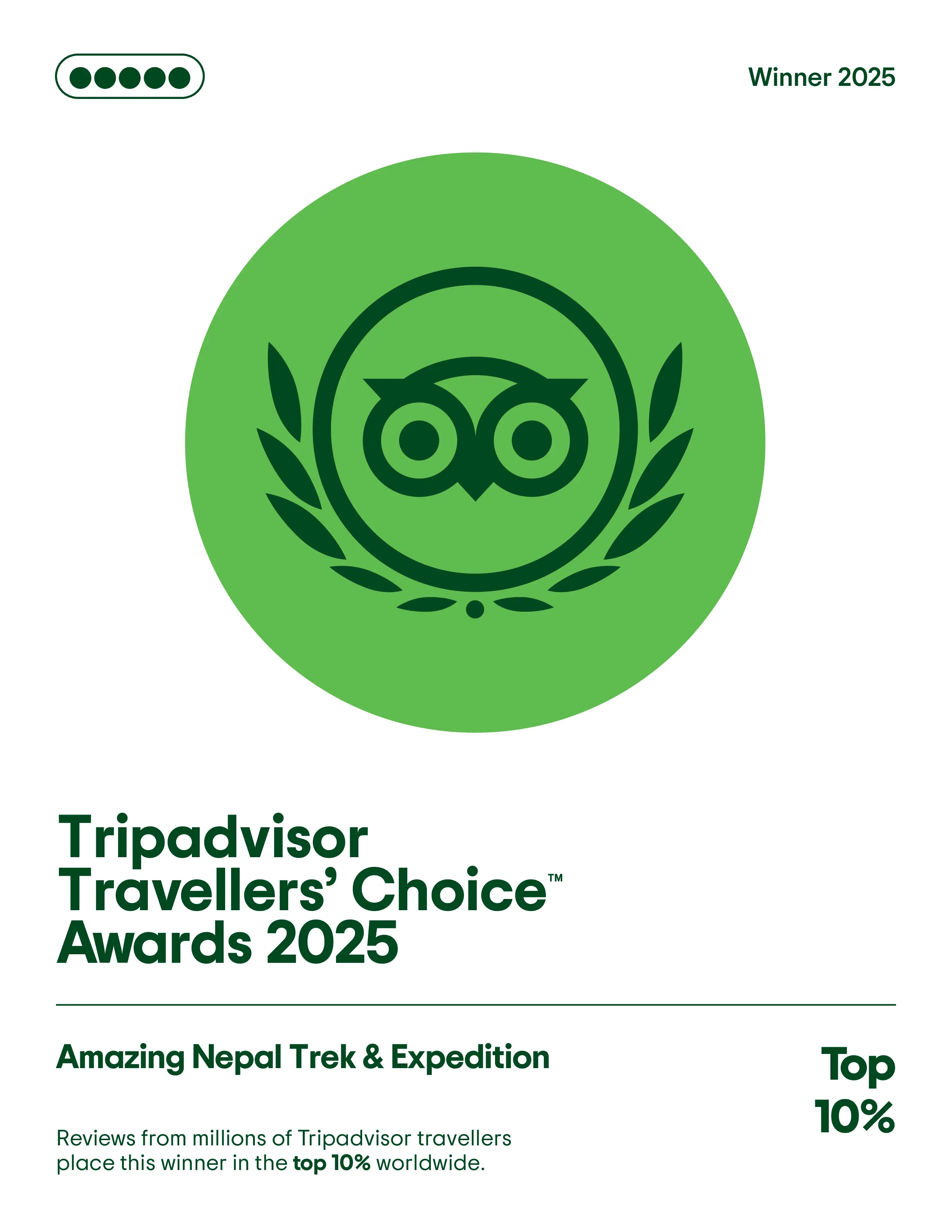
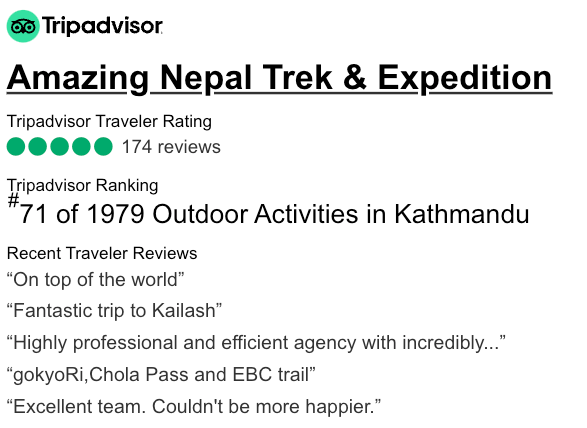

.webp)


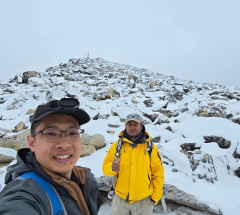
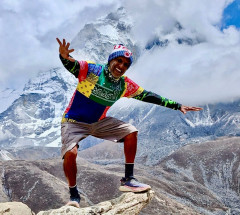

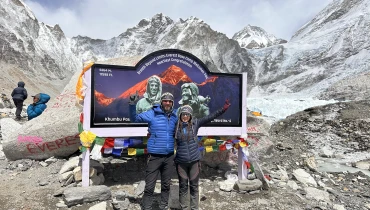

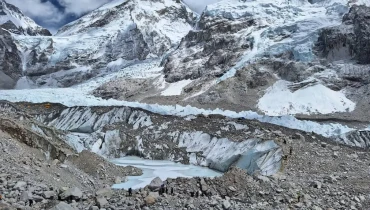
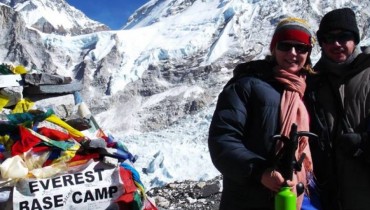

 WhatsApp Us
WhatsApp Us




